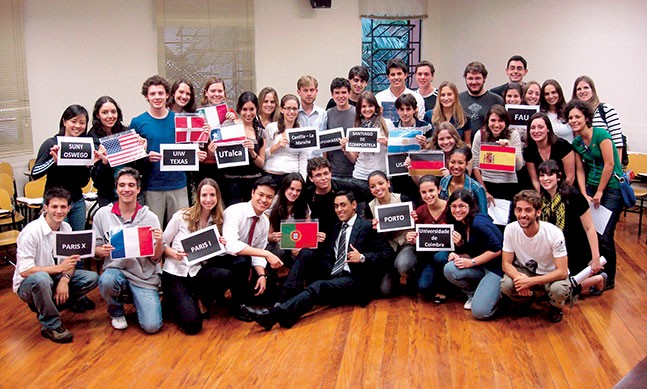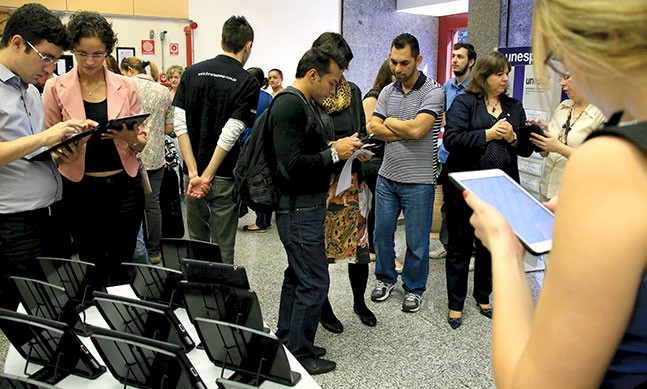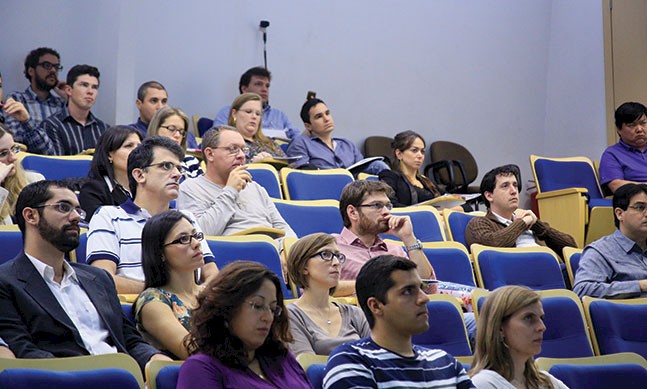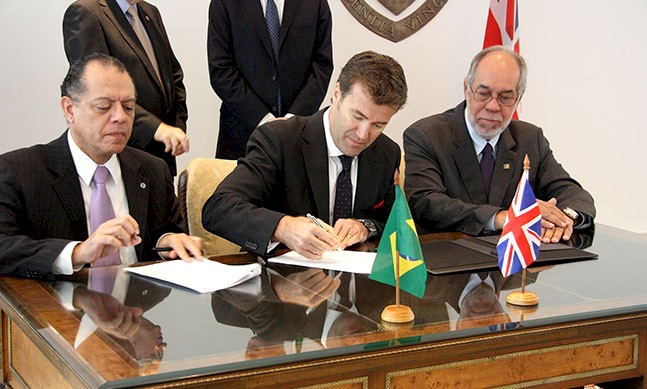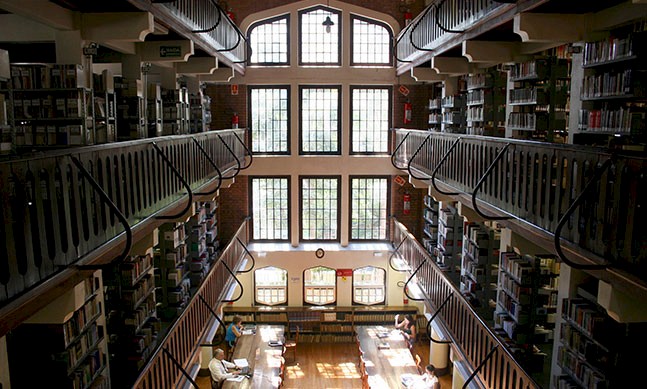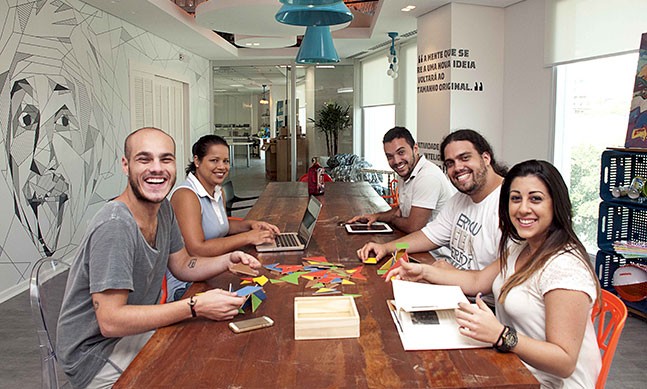In late 2014, GranBio announced the start of operations at its $265 million second-generation ethanol plant in Alagoas, the first of its kind in the southern hemisphere and a major step on the road to Brazil realising its huge potential in alternative energy. Formed in 2011, the company expects to reach production of one billion litres of ethanol in 2022. CEO Bernardo Gradin spoke to The Report Company about the company’s ambition plans to boost ethanol production by 50 percent using agricultural waste, without having to expand cane plantations.
The Report Company: How do you see Brazil, its economy and the market for investments today?
Bernardo Gradin: I believe that, over the last few years, the country has made a decision to lift a crucial strata of the population out of poverty. Every choice you make implies a sacrifice, and either you invest directly in the economy and hope that it will have an impact, or you look at 40 million people that don’t have enough to eat every day.
The government chose to increase public expenditure in order to lift these people out of absolute poverty, both through consumption and social assistance policies, but the fact remains that more than 40 million people have been lifted into a dignified life. I also believe that our new government will have to change this model, because it isn’t sustainable.
The next step must be to focus even more on education, create more freedom for entrepreneurs via a culture that eases bureaucracy, regulations and taxes for entrepreneurs, and investment in infrastructure. One of the problems in Brazil is the fact that, since the most advanced universities in terms of research are public ones, their interaction with private companies remains very complicated. Maybe Brazil’s problem isn’t creating entrepreneurs but rather turning innovative ideas into solid technology within a system that is outdated.
TRC: Brazil also faces an energy crisis. How do you think the country will respond to increasing demand and what role will ethanol play?
BG: Without even taking into account their environmental implications, there are limits to the production of hydrocarbons. Alternative energies will improve and new technology is already starting to make wind and solar more competitive. But biofuels, already accounting for 17-18 percent of the energy produced in Brazil, will also play a key role.
The potential for second generation ethanol, which converts cellulose into sugar and sugar into ethanol, is a 50 percent increase in production without having to plant a single extra hectare of sugarcane. It doesn’t threaten food crops, it doesn't increase the price of land but it does increase production efficiency. I can see ethanol, wind and solar increasing substantially in the Brazilian energy mix but I do think there is still some room for hydropower.
TRC: What would be your response to those who believe Brazil is focussing on making ethanol at the expense of growing food crops?
BG: Brazil has so much unproductive land. Tens of millions of hectares are used for cattle that could also be used for food crops or biofuels and competition would never need to go as far as pushing soy into the Amazon. Extensive cattle farming and deforestation for timber are far more threatening to the Amazon then biofuels. If that was a concern, then second generation ethanol is an even better option because it can increase production by 50 percent with what’s left over from cane production without the need for even a single extra hectare of land.
“Brazil’s problem isn’t creating entrepreneurs but rather turning innovative ideas into solid technology within a system that is outdated.”Tweet This
TRC: What are you plans for GranBio?
BG: The goal was to create a Brazilian company that would have a global impact and contribute both to a cleaner future and an original entrepreneurial DNA of innovation and technology. We gathered well-trained people who helped to put together our business model and who are now implementing it. I believe that this is actually the most innovative thing about GranBio rather than any new technology it may use.
The model seeks flexible biorefineries that can turn sugar from cellulose - the most abundant form of carbon in the world - into biofuels, biochemicals, biomaterials and even nutrients. Our target is to create even more economical and productive forms of biomass and to use more advanced sugar-conversion technologies in scale with strategic partners along the value chain.
We have had to build an entire production chain, developing the technology to collect the sugarcane straw and process biomass and going after economic and logistics-related solutions. The goal now is to create flexible biorefineries where we can produce biomass without competing with the Amazon or food production and to develop further and replicate our model with bioethanol for other bioproducts with cellulosic sources as cheap carbon.
TRC: What are the current limitations of the technology?
BG: The limitation today is performance. Micro-organisms are being developed and the process is still expensive. The problem is still how much of that initial sugar becomes the final product. With the development of metabolic technologies and of the micro-organisms and the reduction in prices of industrial processes, I believe we will arrive at a cleaner and lower-cost carbon than oil.
TRC: What have been the challenges in attracting investors and getting a project like this off the ground?
BG: It's two different challenges: doing something for the first time and doing it in Brazil for the first time. There was a similar plant in Italy, but it was demonstration-only. This would still be the first plant in the world to use sugar cane straw. Biomass poses huge challenges, for example, how do you store 340,000 tonnes of biomass, taking into account rotting, keeping it clean and uniform; it’s a big learning process. Pioneers only learn through practice, though, they don’t have instructions. We expect to reach full capacity within six months.
TRC: Do you have the support of [Brazilian Development Bank]) BNDES?
BG: BNDES financed our first plant and is a very important investor in GranBio. My family is also an investor and we have a very encouraging capital structure for future plants.
We expect to see more interest from potential strategic investors and partners once we can show the plant operating at full capacity. We already have the capital, the financing scheme and the location for the next site; we just want to have everything operating smoothly here before we make that announcement.
TRC: GranBio was named one of the continent’s most innovative companies recently, is that kind of perception important to you?
BG: We like to think of GranBio as being in a state of perpetual innovation. The walls in our offices are covered in whiteboards and we wanted to create a spirit for the company that mixed the magic of innovation with the discipline of entrepreneurs. I hope we always remain innovative. The great risk of receiving such a prize is never getting it again.
“I can see ethanol, wind and solar increasing substantially in the Brazilian energy mix but I do think there is still some room for hydropower.”Tweet This
TRC: Focusing on innovation, too, what part do you want GranBio to play in the green revolution in the coming years?
BG: Our goal is to produce cellulose sugar at large scale for under US$0.12 per pound; that is what will make our production chain competitive with hydrocarbons. GranBio also wants to attract partners, using our entrepreneurial agility and appetite for technological risk, that will aggregate value to that chain. We already have a partnership with Rhodia (part of Belgium’s Solvay group) to produce n-butanol, but there are others we will announce soon.
We also need to innovate upstream to produce competitive biomass. Brazil is known as one of the best places in the world for photosynthetic efficiency, with highly fertile land and copious amounts of sun and water. We are studying all kinds of biomass solutions - tall grass, sorghum, eucalyptus - but we have been investing in a hybrid called energy cane.
Brazilian institutions over the years have always cross-bred canes to try and produce more sugar, discarding those that produce more cellulose. This energy cane requires only a third of the water of some canes and produces three-times as much biomass, and we are now on the third generation. We planted in the hinterlands of Bahia where there was low-intensity cattle farming and, with a little water from wells, grew the cane in ten months. Our plant in Alagoas requires 60,000 hectares to meet current production levels with cane straw left in the fields, but if we were to use energy cane, we would only need about 6,000.
TRC: When will all of this potential become profitable for investors?
BG: A little over two years ago, all we had was a PowerPoint presentation. Today, we have the largest production of energy cane in the country, more than five patents in Brazil and, following an acquisition in the US, more than 130 patents and applications in total. Our plant will become profitable in six months, and our company as a whole from 2017. The model now is to build the new plant assured by the first one, and reduce costs as we learn.
TRC: What are the core values of GranBio?
BG: Our value is in our people. We have created a company in which creativity is welcome and where innovation is part of our mental model. This may come with hurdles, because people get attached to what they have created and sometimes taking the next risk is harder. At the same time, continuous innovation may risk losing focus on implementation.
We want to be able to create and innovate continuously, but only if we also have the discipline to executive projects efficiently. We work hard and the environment has to be creative and pleasant. We need young, talented people with a mix of creative and entrepreneurial attitude and with those values, we may very well be a perfect fit.
“Brazil is known as one of the best places in the world for photosynthetic efficiency, with highly fertile land and copious amounts of sun and water. We are studying all kinds of biomass solutions.”Tweet This





